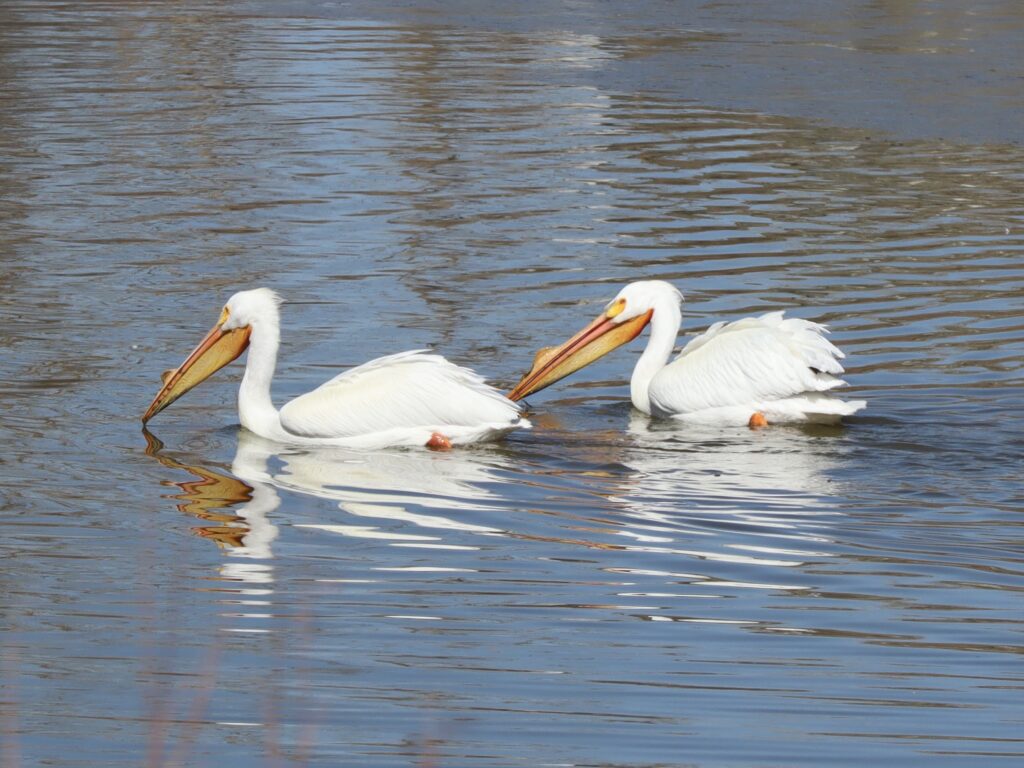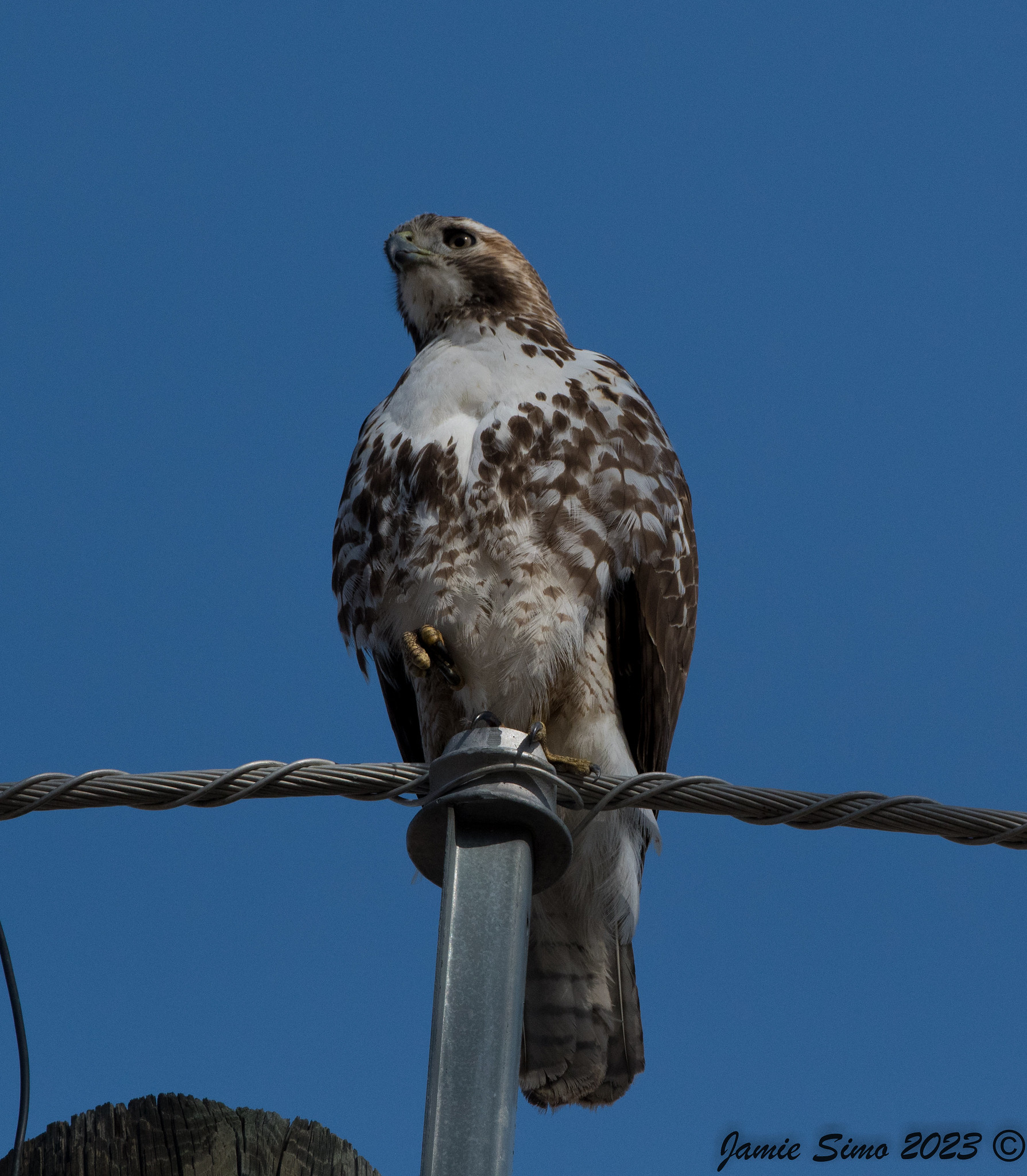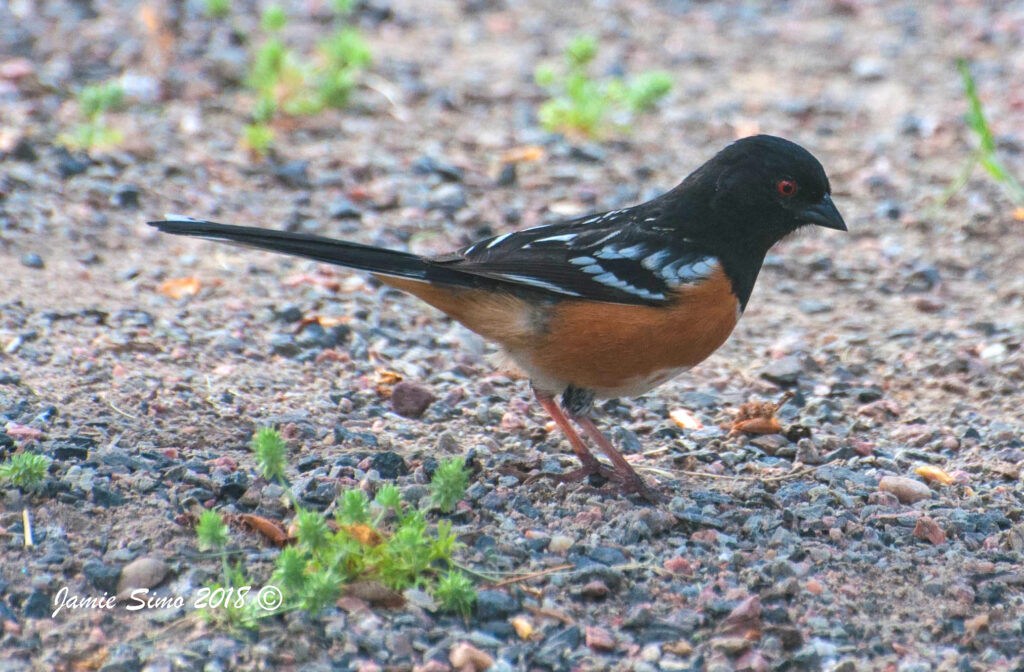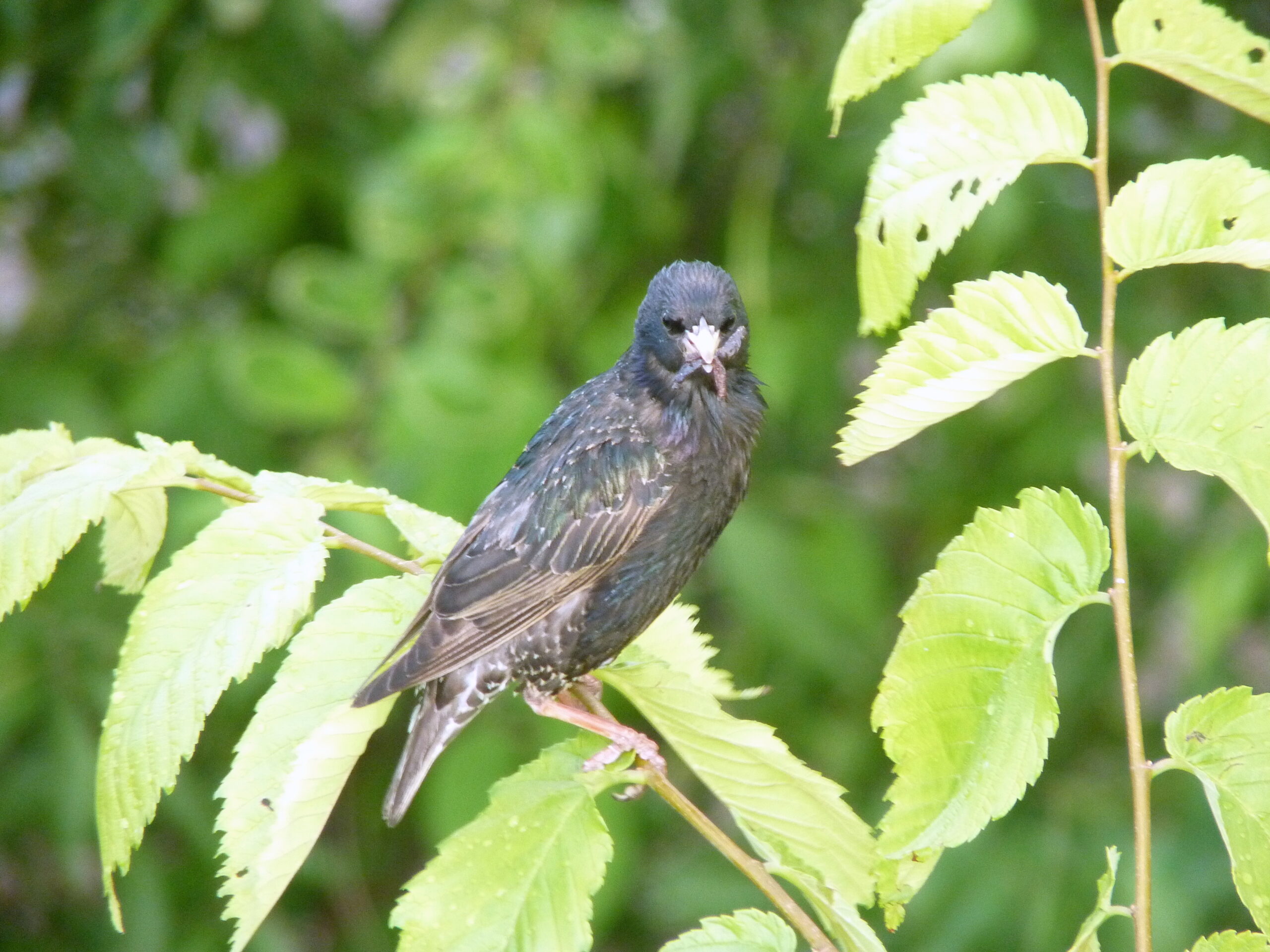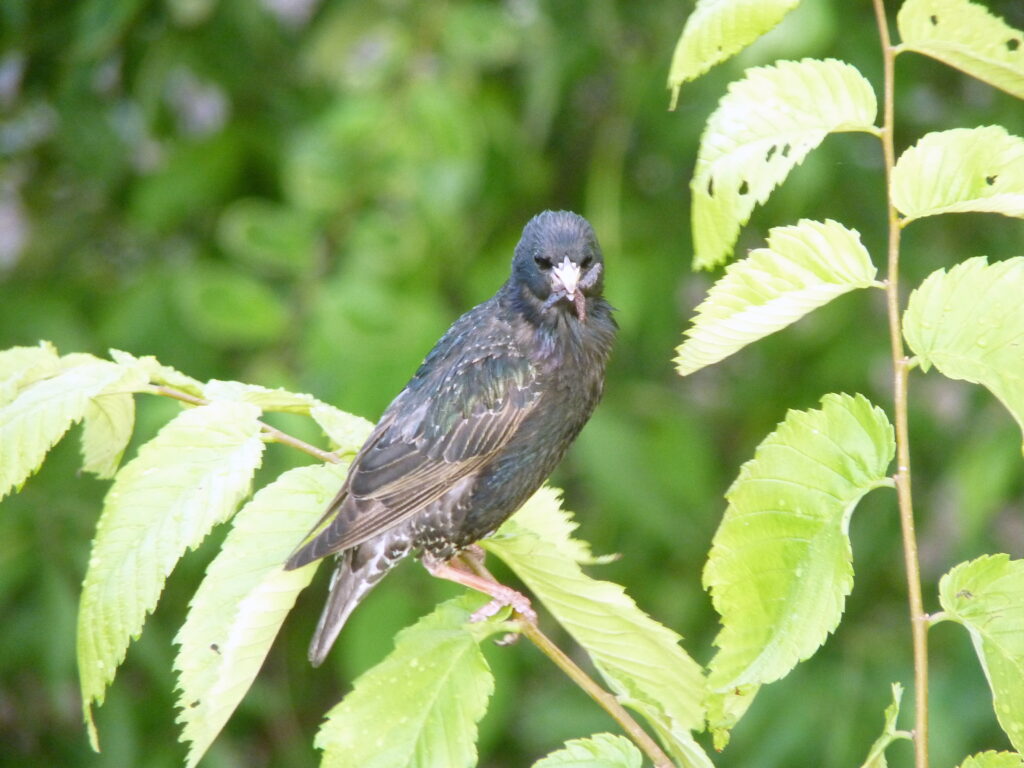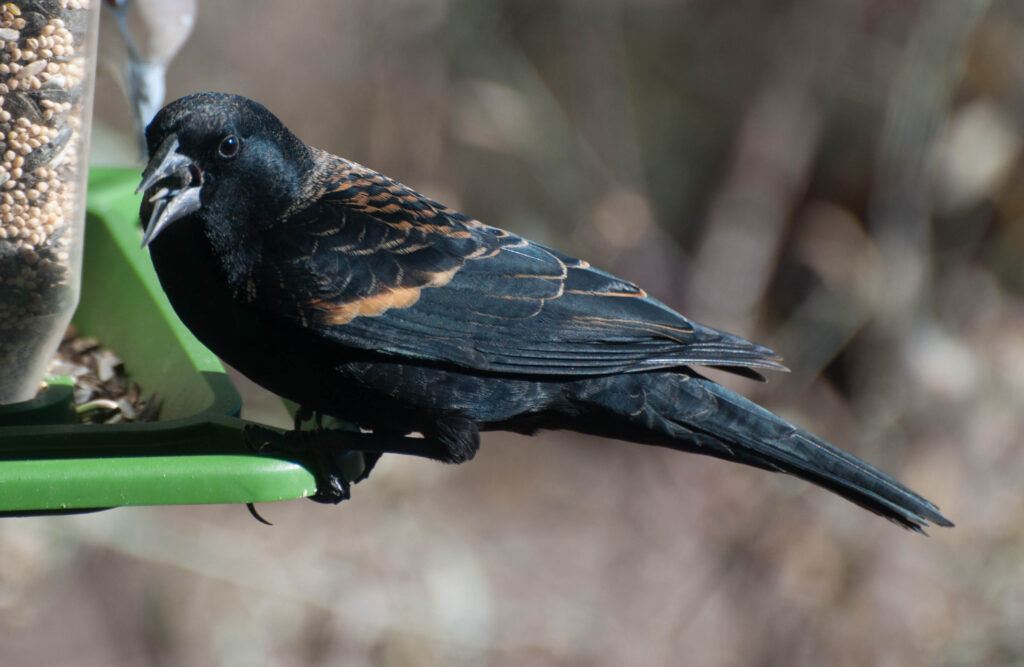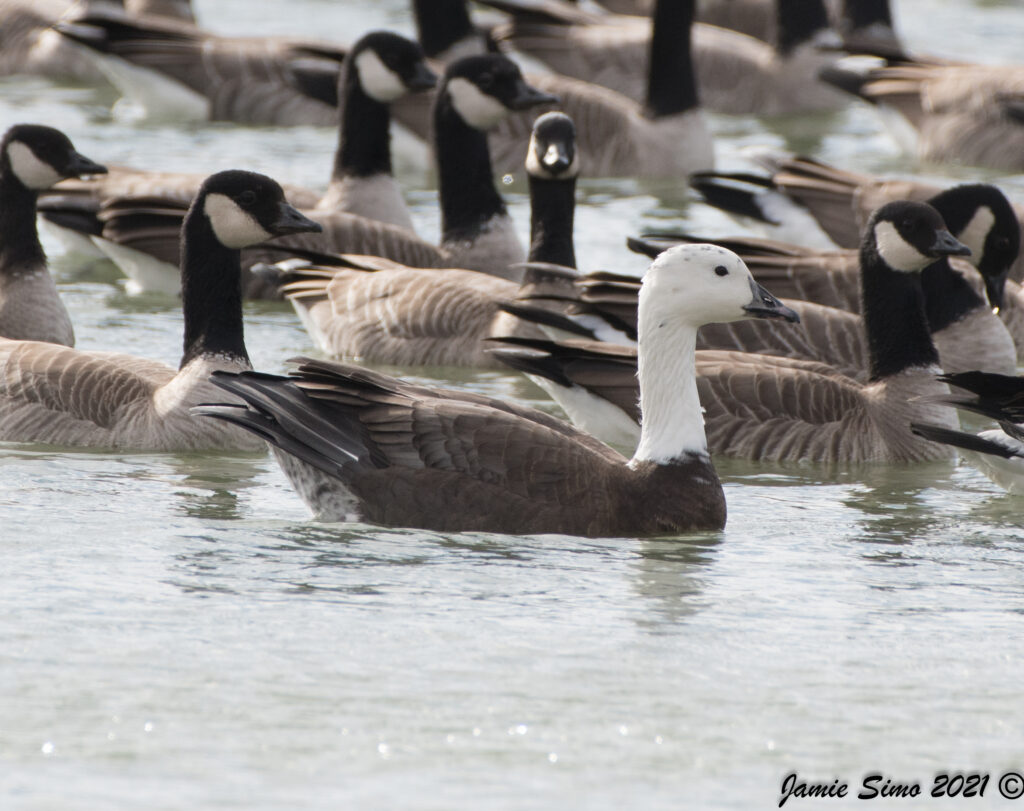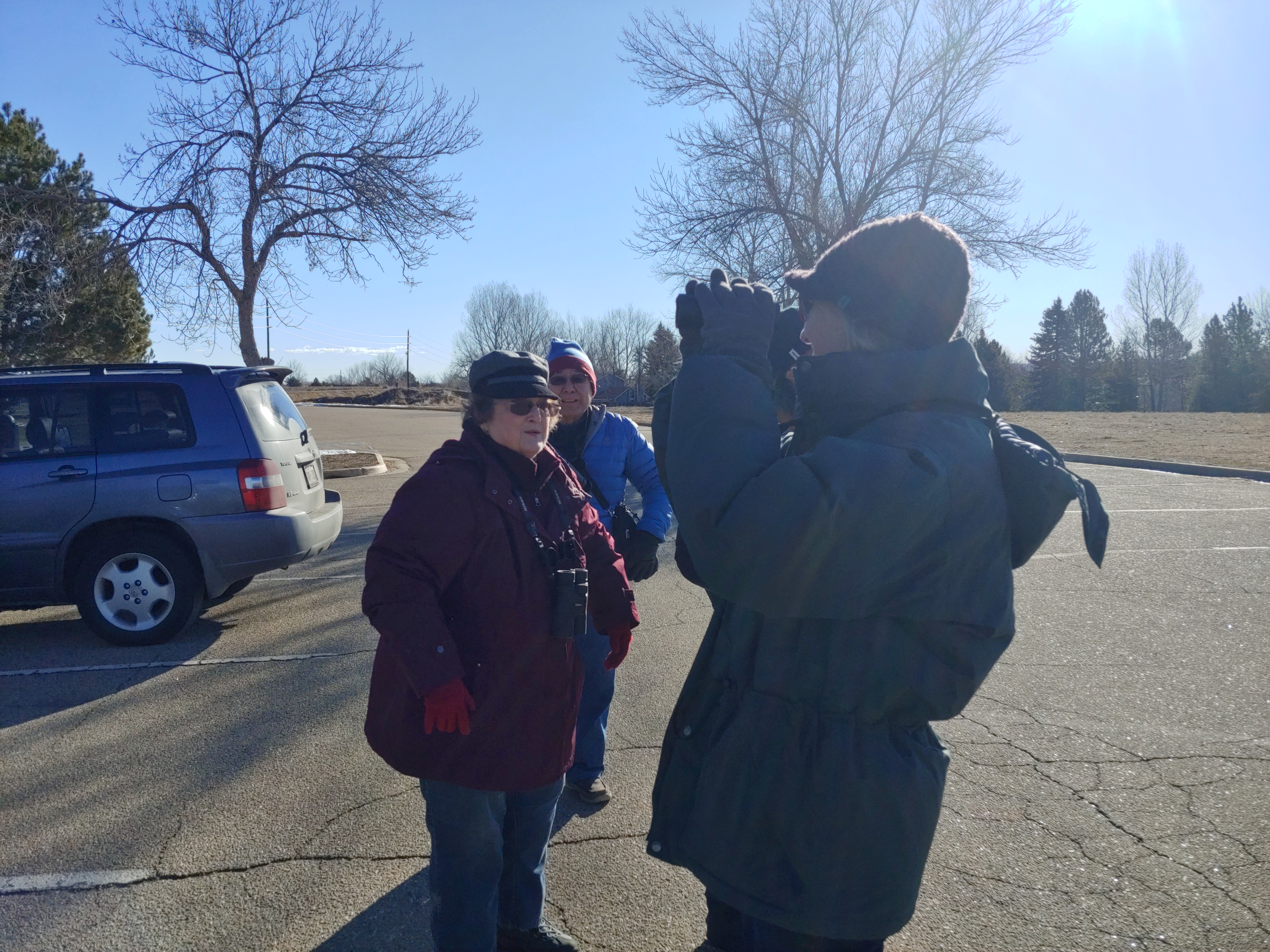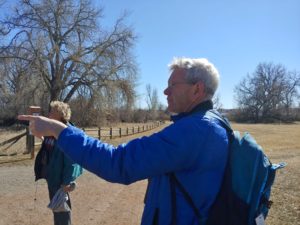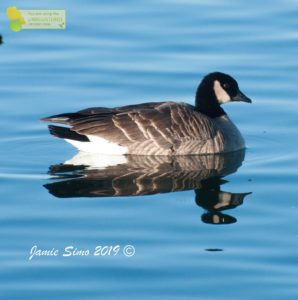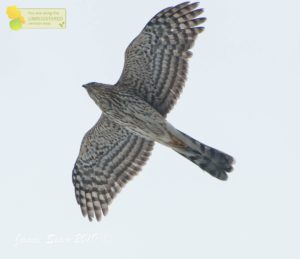
In March, one can almost sense the excitement of Colorado birders in the air: the changing of the guard is near! Soon, after a long winter of anticipation, the spring migrants and summer breeders will be arriving in our favorite patches, and our winter visitors will be heading off to points north. But until then, we can still enjoy the winter waterfowl in their breeding finery, at the same time that we are enjoying the early-spring songs of our local year-round resident birds gearing up for the breeding season.
Waneka Lake and adjacent Greenlee Preserve in Lafayette, Colorado boast several habitats which attract a diverse mix of birds year-round: reservoir, wetland, and nearby farmland surrounded by suburban neighborhoods. At Greenlee Preserve there are also some bird feeders, which have been known to host wintering White-throated Sparrows and several species of hummingbirds in the summer.
Our outing on March 9, 2024 began with the raucous serenade of dozens of European Starlings singing in the trees near the Waneka Lake Park parking lot, imitating several other birds like American Kestrel, Killdeer, and what sounded like Sora. Northern Flickers were also giving their territorial calls and drumming on trees and trash cans. Not far from the parking lot, we found an adult Cooper’s Hawk, which betrayed its presence by its “kek-kek-kek” call. This adult perched in one spot long enough for us all to get great looks through the scope. At one point, it was joined by a second individual, this one an immature bird, allowing us to compare how the plumages of the two ages differ.
Waterfowl was scarce on Waneka Lake, but we did have a few species on the water: Canada Goose, Common and Hooded Mergansers, Gadwall, Mallard, and Green-winged Teal. Greenlee Preserve, surprisingly, was a bit of a bust – hardly any birds around! But, that’s the nature of nature sometimes. We did have a couple of singing Red-winged Blackbirds nearby and two Black-capped Chickadees checking out potential nest cavities in tree branches.
Most of the group continued walking on to nearby Hecla Lake, about a half-mile southwest of Waneka Lake Park. On the way there, we heard and saw a singing White-breasted Nuthatch, singing Black-capped Chickadees, and singing House Finches. Although the water level was low at Hecla Lake, there were a number of interesting birds about. We got good scope views of Green-winged Teal, Ring-necked Duck, and Northern Shoveler. A group of Cackling Geese, conveniently hanging out with some Canada Geese, afforded some good comparison between these very similar-looking species. It still somehow seems like recent news, but I realized in writing this report that it will be 20 years this year since Cackling Goose was split off as a separate species from Canada Goose by the American Ornithological Society (Banks, et al. 2004). One of the best finds for the day at Hecla Lake was two American White Pelicans, which as of this writing appears to be the first eBird report of American White Pelicans for the season in Boulder County! Spring is indeed on its way.
Thanks to everyone who joined us this morning for some good birding and good company. See you next time – until then, happy spring migration!
eBird checklist: https://ebird.org/checklist/S164242686
Waneka Lake Park, Greenlee Preserve, Hecla Lake, and environs, Boulder, Colorado, US
28 species (+2 other taxa)
Cackling Goose (Branta hutchinsii) 5
Canada Goose (Branta canadensis) 28
Northern Shoveler (Spatula clypeata) 4
Gadwall (Mareca strepera) 14
Mallard (Anas platyrhynchos) 3
Green-winged Teal (Anas crecca) 19
Ring-necked Duck (Aythya collaris) 5
Hooded Merganser (Lophodytes cucullatus) 7
Common Merganser (Mergus merganser) 2
Rock Pigeon (Feral Pigeon) (Columba livia (Feral Pigeon)) 16
Eurasian Collared-Dove (Streptopelia decaocto) 2
Mourning Dove (Zenaida macroura) 1
American White Pelican (Pelecanus erythrorhynchos) 2
Cooper’s Hawk (Accipiter cooperii) 2
Sharp-shinned/Cooper’s Hawk (Accipiter striatus/cooperii) 1
Downy Woodpecker (Dryobates pubescens) 1
Northern Flicker (Colaptes auratus) 8
Blue Jay (Cyanocitta cristata) 1
Black-billed Magpie (Pica hudsonia) 1
American Crow (Corvus brachyrhynchos) 9
Common Raven (Corvus corax) 2
Black-capped Chickadee (Poecile atricapillus) 6
White-breasted Nuthatch (Sitta carolinensis) 1
European Starling (Sturnus vulgaris) 30
American Robin (Turdus migratorius) 1
House Sparrow (Passer domesticus) 4
House Finch (Haemorhous mexicanus) 10
Dark-eyed Junco (Junco hyemalis) 1
Dark-eyed Junco (Pink-sided) (Junco hyemalis mearnsi) 2
Red-winged Blackbird (Agelaius phoeniceus) 10
References:
Banks, Richard C., Carla Cicero, Jon L. Dunn, Andrew W. Kratter, Pamela C. Rasmussen, J. V. Remsen, James D. Rising, and Douglas F. Stotz. Forty-Fifth Supplement to the American Ornithologists’ Union Check-List of North American Birds. The Auk, Volume 121, Issue 3, 1 July 2004, Pages 985–995, https://doi.org/10.1093/auk/121.3.985



